
As I stood in my neighbor’s backyard, gazing at their recently completed flat roof extension, a question crossed my mind: are flat roof extensions cheaper? The allure of expanding living space without breaking the bank is certainly appealing, but is it too good to be true?
In this discussion, we will explore the factors influencing the cost of flat roof extensions, compare them with other roofing options, and uncover the secrets behind their potential affordability.
So, let’s dive into the world of flat roof extensions and discover if they truly offer a cost-effective solution for homeowners.
Flat roof extension costs depend on size, materials, and design complexity. These factors greatly impact flat-roof extension costs.
Due to its impact on materials and labor, extension size is crucial. Resources are needed for a larger extension, which can increase costs. However, a smaller extension may save money. The materials used in flat roof extensions affect cost. Innovative materials that are durable and energy efficient may cost more, but they can save money over time. To prolong the extension’s life, choose materials that match the local climate and building codes.
Flat-roof extensions can also be expensive due to their design complexity. Innovative and intricate designs may require specialized skills and more labor, increasing costs. A well-designed and attractive extension can increase property value and provide a unique living space.
Homeowners can make better flat roof extension decisions by considering these factors. Understanding size, materials, and design complexity helps people balance innovation and cost-effectiveness. Professional advice and guidance throughout the project are essential. Thus, homeowners can ensure their flat roof extension meets their needs and fits their budget.
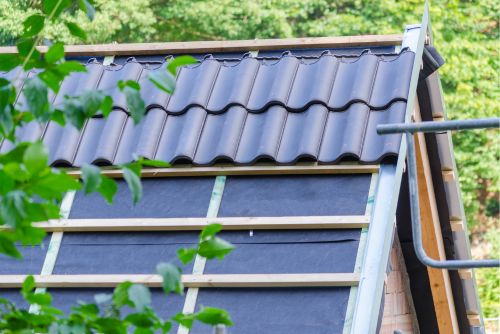
When comparing flat roof extensions to other roofing options, consider cost, durability, and aesthetics.
Flat roof extensions are commonly cheaper than other roofing options. Due to their higher materials and labor costs, traditional pitched roofs cost more. Flat roofs, on the other hand, are simpler and use less material, lowering costs. Flat-roof extensions are appealing to homeowners seeking cost-effective home improvements.
Another consideration is durability. Flat roofs are long-lasting. They can last for years if properly installed and maintained. Flat roofs can withstand heavy rain, snow, and high winds, making this crucial in harsh weather. They’re built to withstand the elements and protect your home.
Flat-roof extensions are modern and sleek, improving the appearance of your home. They add elegance and sophistication to any property with their clean lines and minimalist design. Flat roofs can also be used for rooftop gardens or terraces, adding to the beauty and functionality of your home.
Material costs should be considered when considering flat roof extensions. Understanding flat roof extension material costs is essential to determining if they’re cheaper than other roofing options. Two important considerations:
Flat roof extensions often use innovative materials that can help reduce costs. For example:
The cost of materials for flat roof extensions can vary depending on the chosen option. Some factors that influence the cost include:
Understanding flat roof extension material costs is crucial to determining their cost-effectiveness. Consider innovative materials and make informed material selection decisions to create a cost-effective flat roof extension that meets budget and performance requirements.
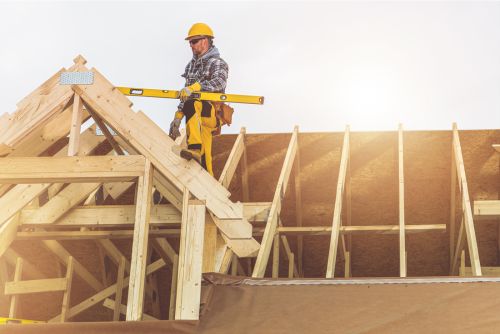
Flat roof extension costs depend on the roof design. Roof design affects extension costs. Innovative roof designs make flat roof extensions cheaper without sacrificing quality.
Roof design affects extension costs through material selection. Different roof designs require different materials, which vary in price. A flat roof design may use fewer materials than a multi-level or sloped design. A simpler roof design reduces costs.
Consider the construction process. Certain roof designs take longer and cost more to build, increasing the extension’s cost. By choosing an easier and faster roof design, costs can be reduced.
Extension costs can also depend on the longevity and maintenance of the roof. Some designs require frequent repairs or replacements, increasing long-term costs. Selecting a durable, low-maintenance roof design can reduce costs over time.
As we examine the space benefits of flat roof extensions, we see that design and materials can greatly affect space and functionality. Flat-roof extensions have many benefits that can make a space more adaptable to different needs. Let’s examine these benefits:
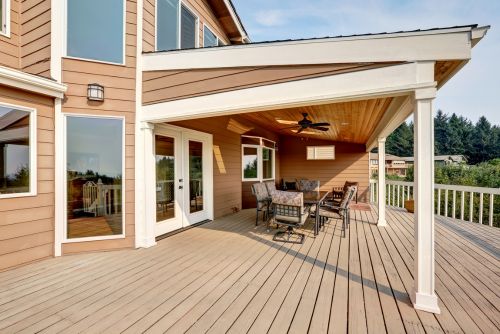
I’ve found that flat roofs for extensions have pros and cons. Flat-roof extensions are relatively inexpensive. They are cheaper to install and maintain, making them appealing to budget-conscious consumers. Flat roofs also give your extension a modern, sleek look.
The extra space a flat roof extension provides is a major benefit. Flat roofs offer more space flexibility than sloped roofs. This allows you to build a rooftop garden, install solar panels, or use the space for outdoor recreation. Flat roofs are easy to maintain and repair, saving time and money.
However, drawbacks must be considered. If neglected, flat roofs can leak and cause other water issues. Without a slope, the roof may struggle to withstand heavy snowfall or other extreme weather. To reduce these risks, proper insulation and drainage are essential.
Consider materials, labor, and any additional features or modifications when budgeting for flat roof extensions. Flat-roof extensions can be affordable, but budget must be considered. Consider these factors when budgeting for a flat roof extension:
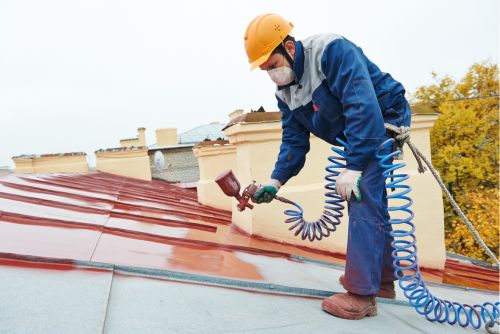
A reliable flat-roof installation contractor is essential to controlling costs and ensuring the success of your flat-roof extension project. Flat-roof extensions require cost control to stay within budget. A reliable contractor ensures quality work and helps manage costs.
One of the main reasons to hire a reputable contractor is that they can accurately estimate flat roof extension costs. They can give you a detailed estimate that includes all materials and labor. This lets you plan your budget by knowing the total cost before starting the project.
A reputable contractor can also suggest cost-saving measures without compromising flat roof extension quality or functionality. They have the latest methods, materials, and tools to cut costs and get results. Their expertise allows them to choose cost-effective solutions, maximizing your investment.
Besides cost control, hiring a reputable contractor ensures the project will be completed on time and within budget. They’ve completed many successful projects, reducing the risk of delays or cost overruns. This lets you plan your schedule and finances to avoid stress and financial strain.
Are flat roof extensions cheaper? Flat roof extensions are durable and low-maintenance, saving money over time. The long-term cost savings of flat roof extensions depend on several factors:

I’ve found that flat roof extensions are cheaper to maintain and repair. This is especially useful for residential and commercial properties seeking cost-effective, high-quality solutions.
Because flat roof extensions are easier to access, maintenance and repair costs are lower. Flat roofs are easy to inspect, maintain, and repair, unlike pitched roofs, which require special equipment. Accessibility reduces maintenance labor and time, lowering costs.
Durable flat-roof extensions are also known. These roofs can last decades with proper installation and maintenance, reducing the need for repairs or replacements. This durability saves property owners money over time, making flat roof extensions appealing.
Additionally, flat roof extensions use cheaper materials than pitched roof extensions. This cost difference can significantly affect maintenance and repair costs, making flat roof extensions cheaper over time.
Flat roof extensions’ lower maintenance and repair costs benefit commercial properties. Businesses can invest in growth and innovation by cutting costs.
Property owners must consider financing options for flat-roof extension projects. There are many financing options for flat roof extensions to make your project more affordable and manageable. Here are some choices:
Innovative financing options can help homeowners afford flat roof extensions. Explore personal loans and home equity to find the best financing option for your needs and budget. Compare interest rates, repayment terms, and fees when comparing financing options. Your flat roof extension project can be affordable with proper planning and financing.
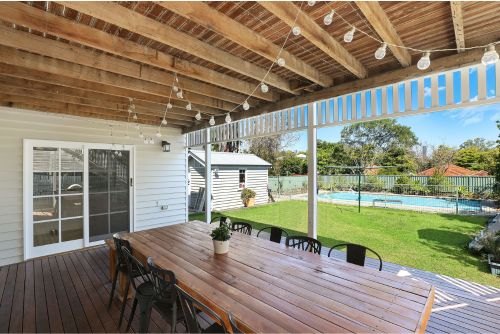
To accurately calculate the ROI of a flat roof extension, many factors must be considered. The financial benefits of installing a flat roof extension should be weighed against the initial investment. Although flat-roof extensions may seem cheaper, it’s important to consider the long-term ROI.
One important factor is the extra living space a flat roof extension provides. This extra space can make your home more functional and valuable. Whether you use the extension as a bedroom, home office, or recreation room, the extra space can make your home more appealing to buyers.
Flat roof extensions’ energy efficiency is another factor. Insulation and solar panels are now available for flat roofs, thanks to advances in building materials and technology. These features reduce energy use, lower utility bills, and promote sustainability. These features can boost your home’s value in today’s green society.
Flat roof extensions’ durability and low maintenance shouldn’t be overlooked. Flat roofs are durable and weatherproof, making them a cost-effective option. A well-maintained flat roof can last decades, saving you money on repairs and replacements.
Explore various strategies to maximize savings on flat roof extensions. Consider these tips:
In my experience, flat roof extensions are a cost-effective way to add living space. The long-term benefits of flat roof extensions should be considered when determining their affordability. They may cost more upfront than other extensions, but their durability and low maintenance make them a good investment.
Flat roof extensions are cheaper to build than pitched roofs. Easy design and installation can reduce labor and material costs. They’re also cheaper because they don’t need trusses or rafters.
The flat surface of these extensions allows for innovation and efficiency. With the rise of green roofs, homeowners can add solar panels, rainwater harvesting systems, and rooftop gardens to their flat roof extensions. These additions foster a sustainable lifestyle and reduce energy costs over time.
Finally, flat roof extensions enable creative interior design. No sloping ceilings allow for creative layouts and modern features. These extensions offer endless possibilities for modern, spacious living, from skylights and large windows to open-plan designs.\
Are flat roof extensions cheaper? In conclusion, flat roof extensions can be a cost-effective option for adding space to your home. Factors such as materials, design, and financing options can influence the overall cost.
However, with careful planning and consideration, it’s possible to reduce the cost of flat roof extensions while still enjoying the benefits of extra space and a potentially higher return on investment.
Durability, cost, and energy efficiency should be considered when choosing flat roof extension roofing materials. I recommend researching and consulting a professional to find the best option for your needs.
Weather, maintenance, and aesthetics should also be considered. Consider these factors when choosing the right roofing materials for your flat roof extension.
Flat roof extension design factors affect cost. Extension size and shape matter. Complex or irregular shapes may cost more in materials and labor.
The cost also depends on the roofing material. Some materials are more expensive than others, so when designing a flat roof extension, consider both aesthetic and financial factors.
Flat-roof extensions may save money over time. Flat roofs are cheaper and easier to install. Over time, flat roofs require less maintenance and repairs. Their simple design makes solar panel installation easy, lowering energy costs over time. Flat roof extensions are cost-effective and may save money in the future.
In terms of maintenance and repairs, it’s important to consider the specific materials used for your flat roof extension. While flat roofs generally require more attention than pitched roofs, they can still be cost-effective in the long run.
Regular inspections and proactive maintenance can help identify and address any issues before they become major problems. With proper care, a flat roof extension can provide durability and functionality for years to come.
When it comes to financing options for flat roof extension projects, there are several possibilities to consider.
First, you could explore traditional bank loans or lines of credit. Another option is to look into home equity loans or refinancing your mortgage.
If you prefer a more innovative approach, you might consider crowdfunding or peer-to-peer lending platforms. Additionally, some contractors offer financing plans directly. It’s important to research and compare these options to find the best fit for your needs and budget.